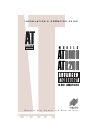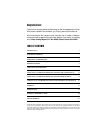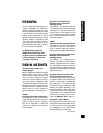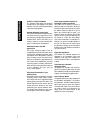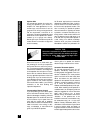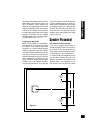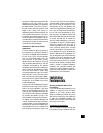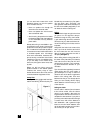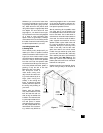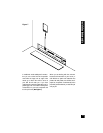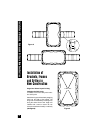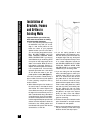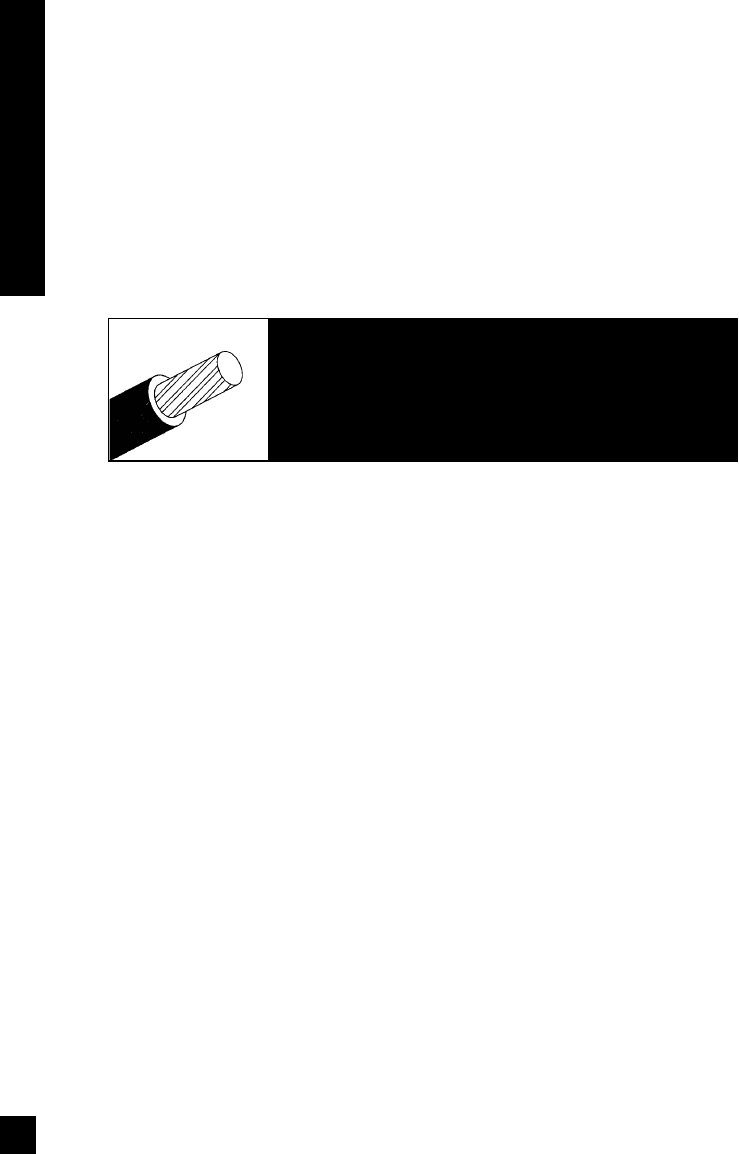
Speaker Wire
Use 2-conductor speaker wire when con-
necting AT speakers to your receiver or
amplifier. For most applications, we rec-
ommend you use a minimum of 16 or 18
gauge wire. For wiring runs longer than 80
feet we recommend a minimum of 14
gauge wire. The spring loaded binding post
terminals of the AT speakers will accom-
modate up to 8 gauge wire directly.
Banana jack or pin connectors may also be
used to allow the connection of larger size
wires if necessary.
When wire is to be run inside walls, spe-
cial jacketing (CL-2 or CL-3) is required to
both protect the wire and for fire preven-
tion. In some areas conduit is required. For
a trouble-free installation, low voltage wire
such as speaker wire must be run in accor-
dance with the National Electrical Code
and any applicable provisions of the local
building code. If you are unsure of the cor-
rect installation techniques, wire jacket or
type of conduit to use, consult a profes-
sional audio/video installer, your building
contractor, or the local building and
inspection department.
Incorporating a Remote Control
If you are planning to use a stereo system
with a hand held IR remote control, con-
sider the advantages of installing a Niles IR
Repeater system. You are able to control all
of the functions of your system from the
room with the remote pair of speakers.
Niles makes a number of IR sensors which
install in the wall, in the ceiling, in cabi-
netry, on tabletops, or even behind the
grille of your Niles AT speakers.
An IR sensor requires that a 2-conductor
shielded wire (West Penn D291 or equiva-
lent) be home run from each sensor loca-
tion to the main equipment location. This
wire is normally run beside the speaker
wire at the same time. Typically, the sensor
is placed in a location that faces your lis-
tening position. Most remote controls will
have an effective line of sight range of 18
to 30 feet with any Niles sensor placed in
a wall, ceiling, on a cabinet or tabletop.
However, when you place a Niles MS-1
MicroSensor behind the perforated alu-
minum grille of a speaker, the sensor’s
effective range is reduced to 9 to 15 feet.
Acoustical Treatment Options
For the best performance from your AT
speakers, acoustically treating the sur-
rounding drywall is suggested. In new con-
struction installations, the most practical
option is to block off the wall cavity both
above and below the area where the
speaker will be installed. This will create a
“backbox” containing a specific volume of
air in which the performance of the
AT8000 and AT8200 speakers will be opti-
mized. When installing the AT speakers in
a standard wall (16” stud spacing with 2x4
studs) the suggested air volume would be
2540 cubic inches or 52” of space
between the top and bottom walls of the
“backbox”. If the speakers are to be
installed in a 2x6 wall, a true backbox may
be constructed using 1/2” or 5/8” thick
Medium Density Fiberboard (MDF). The
dimensions of the enclosure may be varied
in terms of height, width, and depth, as
long as the interior volume of the enclosure
remains approximately 2540 cubic inches.
Installation Considerations
4
TECH TIP
Wire size is expressed by its AWG (American Wire
Gauge) number. The lower the number, the larger
the wire, i.e. twelve AWG is physically larger than
fourteen AWG.



